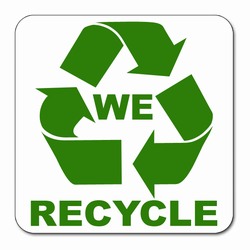
It is instinctive to conclude that the product is recyclable and is greener when one sees the green triangular arrow located either on the side or at the bottom of the package. Nevertheless, this seems to be a strategic and intentional mislead, as chef-turned-activist Hugh Fearnley-Whittingstall discovered. In fact, the Starbucks coffee cup with a proudly printed green label only contains 1% of material that can be successfully processed and recycled by regular recycling processes. Most of the materials go directly into landfill, resulting in limited to non-existent effect on waste reduction. Here lies Hugh’s “Waste Not” campaign, where he aims to shape behaviour and trigger change. As a response, Starbucks implemented a new policy in U.K., doubling its discount (25p to 50p) to people who bring their own containers for coffee.
Companies like Starbucks and Costa did not set themselves up to be sustainable. This added focus has evolved overtime, with shifting consumer preference and the potential for profit. The tactic for Starbucks is very strategic, in the sense that it responded to the concern posed by Hugh, without significantly compromising its ability to generate revenue. The common price mark-up we see in one cup of coffee is calculated to be 67% – 80%, with a £ 2.10 for tall coffee in the U.K, the profit margin is thinned by about one third. I personally regard this as quite impressive for a for-profit organization. This reflected the fact that sustainability is no longer a choice in businesses, at least in developed countries; and it has become a requirement.

What appear to be more impressive are Starbucks’ PR and associated departments, and its long range planning horizon. When negative results leaked out, it is more logical to respond to the criticism with a remedy, and then further investigate this matter. The remedy can technically be revoked or altered any time. As well, another question here is what percentage of consumer is actually conscious about such news, and is at hear, an advocate or active practitioner. This seems to be always at question, because people may appear to be following the trend, but may not pay that much attention when it comes to day to day details. Starbucks has found a hole in the recycling classification system, and produced something that is coated with recyclability. Since most people may not necessarily invest their time into discovering the truth, these cups end up falling through the cracks. This simply results more inefficiencies. Starbucks is not lying. However, the end result appears to be as ineffective as if the label is not present.
Can we conclude that the recycling label has been abused? Probably yes. Nevertheless, we are unclear of Starbucks’ actual intention in this case. I feel that unless this set of specialized, professional knowledge can become public knowledge, there would still be areas for improvement, and the opportunity to make mistakes.